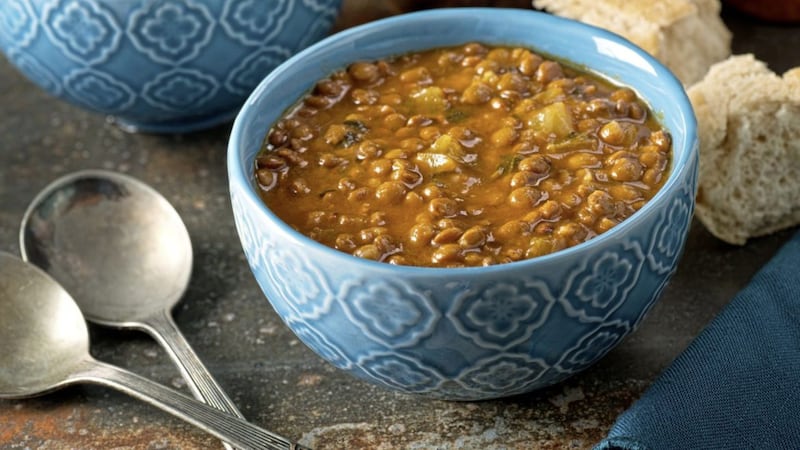IN A workshop this week, someone asked me how they could get more fibre into their diet as they were trying to cut back on bread. When we think of fibre, most of us think wholemeal bread or high bran cereals but there are plenty of other ways of increasing our fibre intake.
:: Where do we get fibre?
Soluble fibre is the stuff that helps support digestion and has been associated with improved insulin-blood-sugar balance. Found in fruit, vegetables, oats, flaxseed, beans, lentils.
Insoluble fibre is what we used to call ‘roughage’. It adds bulk to stools and helps movement along the digestive tract. Found in wholegrain cereals, the skins of fruit and vegetables, nuts, seeds and pulses.
:: Why do we need fibre?
Most of us know that eating a high fibre diet is good for our gut, helping to keep us regular and our digestive tract in good working order, but have you ever stopped to consider that increasing fibre in your diet might help with weight management, may help to support cardiovascular health (high fibre diets are thought to reduce risk of heart attack, stroke and high blood pressure), reduce risk of type 2 diabetes and help support optimal female hormone balance?
:: How much fibre do we need to be healthy?
It is recommended that we eat around 30g fibre a day but, according to the National Diet and Nutrition Survey, a whopping 94-98 per cent of us are not getting enough. It seems that most adults in Northern Ireland are only getting around 17g of fibre a day. We can do better than that, can’t we?
To get 30g fibre in our diet, we could eat:
Breakfast – a bowl of porridge (3.2g) with 30g flaxseed (7.1g) and a cup of blueberries (1.5g)
Mid morning snack – a banana (1.5g)
Lunch – a filled wholemeal pitta pocket (4.2g) with humous (2.8g) and salad (1.7g)
Afternoon snack – 2 oatcakes (2.2g) with almond nut butter (2.6g)
Dinner – a baked sweet potato (4g) with green beans (2g) and salmon
:: A word of caution...
If all of this has got you thinking, and you are keen to increase your fibre intake, there are some side effects you need to know about. If you suddenly eat a high-fibre diet and are not used to it, your belly will tell you about it.
You are likely to feel gurgles, windy and may fart more than normal – you have been warned!
If you are currently eating a low-fibre diet, start slowly and work your way up and you will be fine.
:: How can I increase my fibre intake?
Are you ready to take on the fibre challenge? Here are a few hot tips to help you increase your fibre:
1 Eat more pulses. Peas, beans and lentils are a great source of soluble fibre and are a cheap and easy way to give food a fibre boost. Try adding chickpeas to curry, adding humous to your shopping list, try puy lentils in Bolognese sauce, add extra kidney beans to chilli.
2 Oat bran tends to be more gentle on our digestion than wheat bran. Porridge, overnight oats or oatcakes are easy additions.
3 Try some of the new pasta variations – pea or lentil pastas are great if you have a gluten-free diet and wholemeal pasta is a lot more palatable than it used to be.
4 Swap to wholegrains like brown rice, wholemeal noodles, wholegrain bread and ditch the white stuff.
5 Eat your spuds with the skins on.
6 Eat your five a day, every day.
7 Add some flaxseed to breakfast, into yoghurts or sprinkled over soups and salads for a super fibre boost.
8 Eat more nuts and nut butters. Keep an eye out for sugar-free almond or cashew nut butter, delicious on oatcakes or with sliced apple for a fibre boost.








